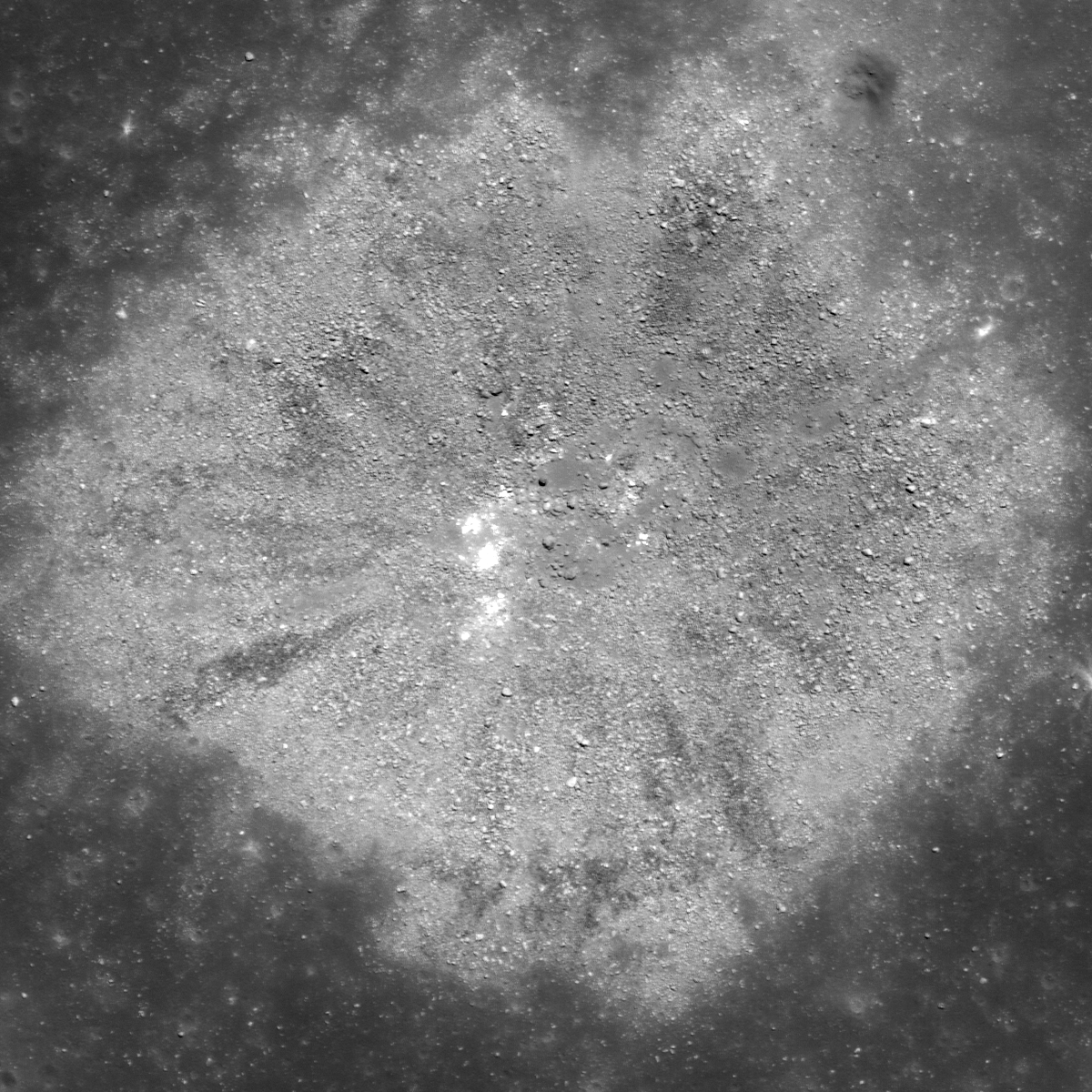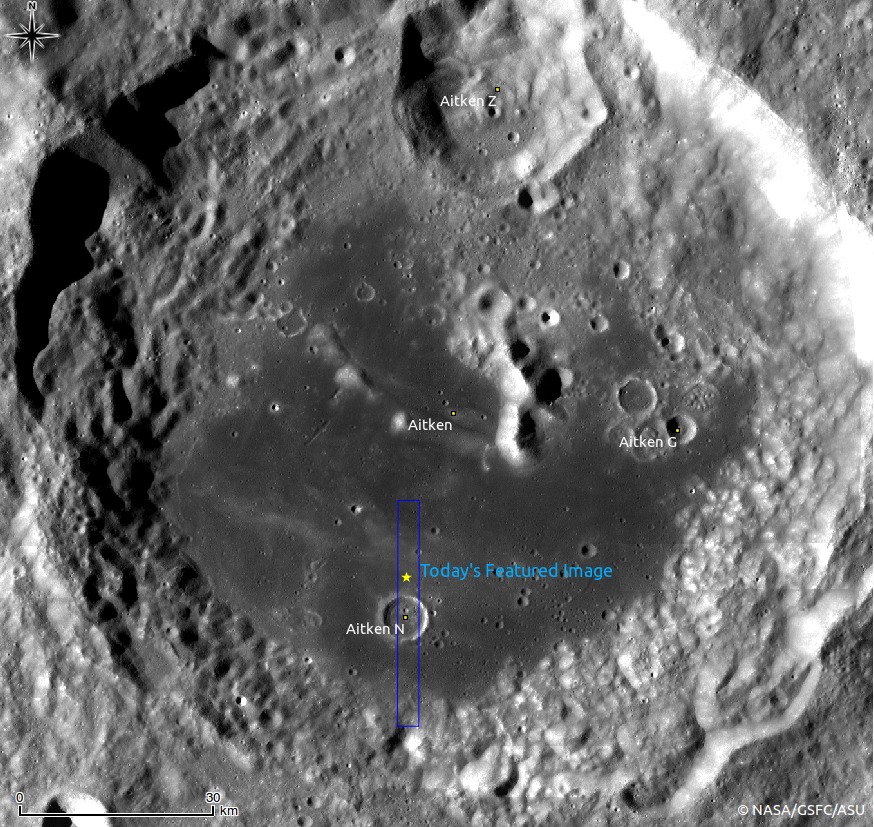
This extremely boulder-rich, unnamed crater is located on the floor of Aitken crater (at the north rim of South Pole Aitken Basin); the diameter is about 480 meters. The floor of Aitken crater is thought to be resurfaced by post-impact lava flows, which corresponds to the low-reflectance smooth surface. The unnamed crater impacted with and excavated these putative lava flows long after the lava solidified.
The high-reflectance boulders of this crater are mostly distributed within the crater cavity, and very few are visible in its ejecta. The extent of this ejecta, traced by the dark/bright contrast, is quite small compared to the crater diameter. Another crater with a similar diameter at 3.4 km to the northeast also has similar characteristics, which are different from typical craters with smooth bowl-shaped cavities and long, bright rays.
The physical properties of target materials, in this case the lava flow layers, and projectile itself, can change the final crater shape and boulder distribution. Why are so many boulders found only on the interior? That is a darned good question, and we don't know the answer! Perhaps the basalt is very thin here, and the lower portions of the crater expose underlying unconsolidated (loose) debris supplied as the ejecta from Aitken N crater. The strength difference between a basalt cap and the regolith may play a role in boulder distribution as well. This type of crater occurs in other mare, and their origins are often mysterious. Here is yet another lunar enigma awaiting future exploration!
Explorer this boulder rich crater by full NAC frame yourself!
Related posts:
Farside impact!, Ray of boulders, Recent Impact in Oceanus Procellarum, Rubble Pile on Fresh Crater Floor, Crater in Mare Humorum
Published by Hiroyuki Sato on 2 November 2011
